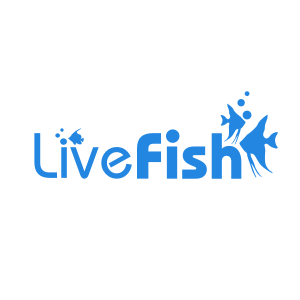Bluehead Wrasse - Large
The Bluehead Wrasse is a lively specimen which is easy to look after. As it matures its body colour develops, giving it an eye-catching appearance.
Bluehead Wrasse proceeds through a variety of colour changes as they develop. Juveniles are yellow with black marks on their side and occasionally their fins. Male adults have a blue head with bands of black, white, and black again, behind the head and pectoral fins. The rear of their body is yellow/green, with a green tail fin. The Female Bluehead Wrasse is a darker shade of turquoise with two black bands. If a female becomes male, they will develop the males’ colours.
The sex of this species can be distinguished by male and females different body colour. They haven't been bred in captivity, but in the wild, the terminal phase males will guard breeding sites. Females visit these sites every day to reproduce. They can also group spawn and will release eggs in a spawning rush. Initial phase males can attempt to fertilize eggs in these situations.
This species can be found in the Western Atlantic Ocean, around the Caribbean and Gulf of Mexico. They inhabit coral reefs, seagrass, and inshore areas that aren't reef based. Usually between depths of 3-40 meters.
Tank Recommendations for your Bluehead Wrasse
The smallest recommended tank size is 40 gallons (151.42 litres). This should increase to 75 gallons (283.9 litres) if sharing with other fish. A mated pair in a community tank will need 125 gallons (473.2 litres).
Bluehead Wrasse can stay in a reef aquarium but will need to be monitored. They won't bother corals but will consume small inverts.
We recommend a sand substrate as they may burrow into the sand at night. A suitable tank should also include plenty of live rock for shelter. These are active fish that need a large amount of open swimming space. Wrasses are capable of jumping out of a tank so a secure lid should cover the top.
Suitable Tank Buddies
Bluehead Wrasse is a semi-aggressive fish. Females and juveniles can cohabit in a group. Initial phase and terminal phase males will be territorial and show aggression.
This species can harass and bully new additions to a tank community. If possible, it is best to introduce them to a tank last.
Usually Compatible
Suitable tank buddies include Large Angelfish, Boxfish, Clownfish, Damselfush and Tangs/Surgeons,
Sometime Compatible
Care should be taken with Dwarf Angelfish, Blennies, Gobies, Hogfish, and Triggerfish.
Rarely Compatible
Bluehead Wrasse will consume small invertebrates. They are too active to co-habit with Seahorses or Pipefish.
Feeding your Bluehead Wrasse
The Bluehead Wrasse is carnivorous. They can eat a variety of meaty foods. A suitable diet includes chopped fish, vitamin-enriched brine shrimp, and mysis shrimp, krill, squid, and mussels. They will also consume crustaceans, flake foods, and pellets. Feeding should occur 2-3 times per day.
| Scientific Name | Thalassoma bifasciatum |
|---|---|
| Care Level | Easy |
| Common Names | Bluehead Wrasse, Blue Mah, Doctor Fish, Tikitiki |
| Diet | Carnivore |
| Fish Family | Labridae |
| Lifespan (years) | 3 |
| Max. Length (cm) | 18 |
| Min. Tank Volume (l) | 151 |
| Origin | Western Atlantic Ocean, around the Caribbean and Gulf of Mexico. |
| Reef Safe | With Caution |
| Sociability | Semi-aggressive |
| Venomous | No |
| Water Conditions | 22.2-25.5° C (72-78° F), dKH 8-12, pH 8.1-8.4, sg 1.020-1.025 |


